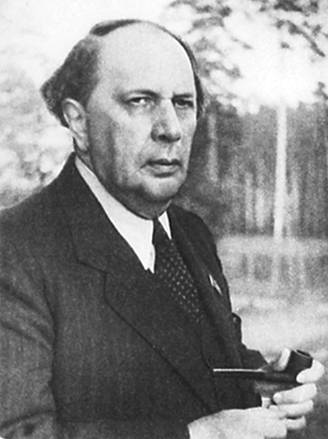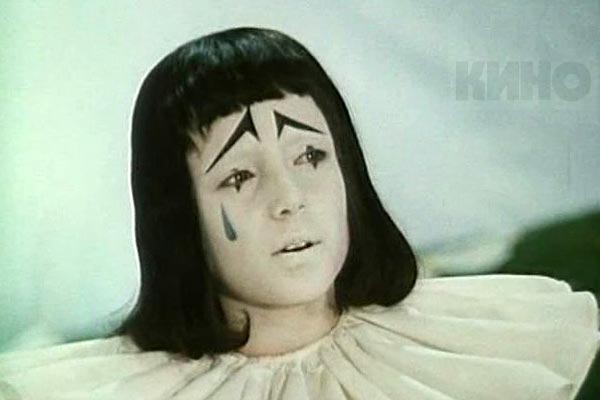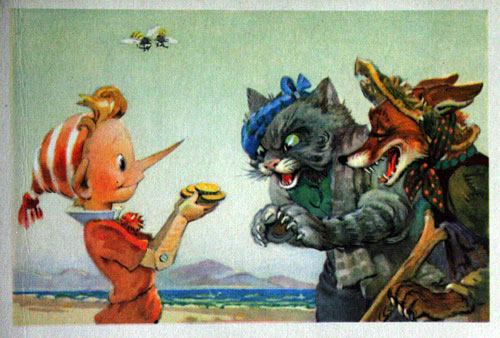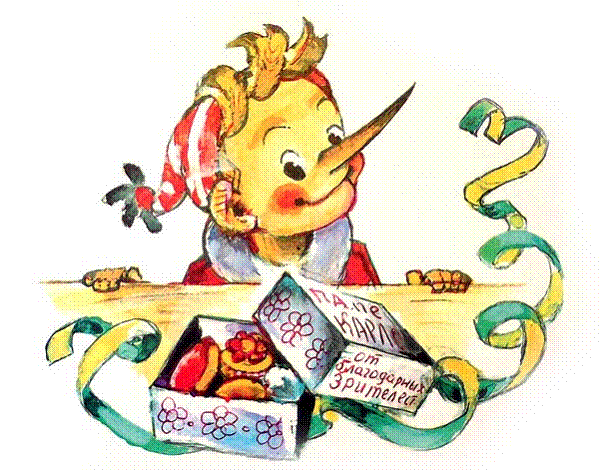|
The history of the works` creation |
||||||||
|
Carlo Lorenchini, also known to the whole world as Kollodi, his literary name (the name of the suburb where he spent his childhood) , began to write his famous fairytale at the age when discoveries seldom can be made¢ he was 50 years old. He lived professional philologistÆs life filled with daily feverish work and giving not many joys. The first successes came to Kollodi when he began to write for children.
At first there were translations of Sharle PierroÆs fairytales, after that ¢ several very successful books which were written under the influence of the famous teacher and writer J. Parravachiniģ These books caught the fancy of readers but whatÆs really important ¢ they prepared appearance of the ōPinokkioö. Thanks to the writer and his hero the suburb Kollodi became famous. The monument had been constructed there to the little wooden man, and the inscription had been carved on it : ōTo immortal Pinokkio ¢ thankful readers at the age from 4 to 70ö.The influence of this book on Italian readers and writers isgreat because you know all writers were children and the book about Pinocchio came to their life in numbers of their ōfirst impressionsö.
The publicationof the fairytale under the title ōThe one fantoccini storyö began in the first issue of the new weekly magazine ōChildÆs newspaperö which came out under the editorship of Fernando Martini in Rome on 7th July in 1881. After Pinokkio`s hanging scene the fairytale`s end had been declared but the children, obviously, had disagreed with such destiny oftheir beloved and the author had been compelled to revive the wooden little man. Kollodi continued his work by fits and starts. The newspaper publication had come to the end only in 1883 and then there was a first separate edition - "Adventures of Pinokkio. History of one puppet" - with sixty two drawings of Enriko Mandzanti. To the beginning of the XX-th century the fairy tale (under some information) had been republishedfive hundred (500!) times. In Russia the fairy tale "Adventures of Pinokkio" had been published in 1906 by M.O.Volf's publishing house for the first time and had been specified that the translation was made from 480th Italian edition! The full translation into Russian had been carried out by Kazakevich (it was published in 1959).
In 1924 in Berlin the Russian version of "Adventures of Pinokkio" by K.Kollodi appeared. The book was let out by publishing house "Nakanune" - body of those Russian emigrant circles which stood up for homecoming and thought of themselves as though already on the eve of returning.The cover read: " The translation from Italian by Nina Petrovskaya. Alexei Tolstoy altered and processed". The legendary history of "The little gold key" begins with this original book. Tolstoy wished to edit only the first translation of "Pinokkio" which was executed by Petrovskaya. As a result there was not edited translation but artistically rethought alteration. Tolstoy decided to retell the book of Karlo Kollodi in his own way. In the introduction to the fairytale which he named "the little gold key, or Adventures of Buratino", the writer declared that read "The adventures of Pinokkio" in his childhood, often retold the story of a wooden doll to his friends and invented such adventures which were not in the book . In the introduction it is told: "When I was small, - many, many years ago, - I read one book called "Pinokkio, or Adventures of a wooden doll "(a wooden doll in Italian - Buratino) . Having supplied" the little gold key "with the preface the author had taken care of the history of the tale. Almost all who had written about" the Gold key "refer to this preface. Really it`s not so. Tolstoy was already an adult person when he read for the first time a fairy tale about boy from a log. When the writer was working at retelling the "Pinokkio" remembered his own childhood, children's entertainments and dreams of unusual adventures that`s why his Buratino is very similar to Alesha Tolstoy himself in the childhood. Certainly the writer made up the history about the golden key but the temper of Buratino reminds his own very much. Buratino - boy is awfully restless and curious. He pierced a canvas with the drawn centre in a closet of daddy Karlo by his long nose and he made out the secret door through a hole. The gold key fitted to it in the end of the tale! In the book "Adventure of Pinokkio" by Karlo Kollodi the burning centre was drawn in a closet of the hero`s father (whose name was not Karlo but Dzheppetto) too but the writer didn`t write anything more about it . And Alexei Tolstoy, reading the fairy tale of Kollodi, paid attention to this centre and decided to look into with the hero and as a result there was a new fairy tale. Tolstoy's fantastic story "The golden key, or the adventures of Buratino" was published in the "Pionerskaya pravda" in 1935 for the first time. The first edition of "golden key" came out in Leningrad in 1936 (50 thousand copy) and was supplied by an inscription: "I Devote this book to Lyudmila Ilinichna Krestinskaya", and later "I Devote this book to Lyudmila Ilinichna Tolstaya".
It`s not clearly, which book("when he was small much time ago") Tolstoy read. It is not known also, in what language he read this book. He did not know Italian then and later either and Russian translations of K.Kollodi`s tale began to be published since 1906 when he prepared for the first book of the verses, so we can`t speak about any "reading in the childhood". Tolstoy's preface to "the golden key" - an author's legend about origin of the fairytale, small mystification of the storyteller. Tolstoy used mystification to explain by his own language, how it`s necessary to read it. The writer removed an inscription about "the novel for children and adults" and replaced it with his introduction- the text treating about the same but in another way. Tolstoy's introduction to "the golden key" is an author's interpretation of the genre, the developed genre definition, genre installation. Double addressing of a tale is put in it as a creative method. That`s why it`s believed that the fantastic story about Buratino is in full conformity with the warning of the writer. But peculiarities of his fantastic narration - a fruit of a prudent art instead of naive children's memory. The introduction moves reader's perception purposefully. What this purpose about? It is not difficult to notice that the introduction aspires to obscure , weaken, erase the original date of the creation of a fairy tale ¢ the 30th years of our century - and to date it as the end of the XIX-th century when the writer was small. It was invented and conditional but the date which was offered by the author is necessary to consider and remember it. It`s important as other, well-known date - "June, 22nd, 1941", - finishing the trilogy "A long ordeal". Both datings are comparable on the art function, both demand not so much historico-literary or biographic interpretation - but first of all - actually aesthetic one. |




